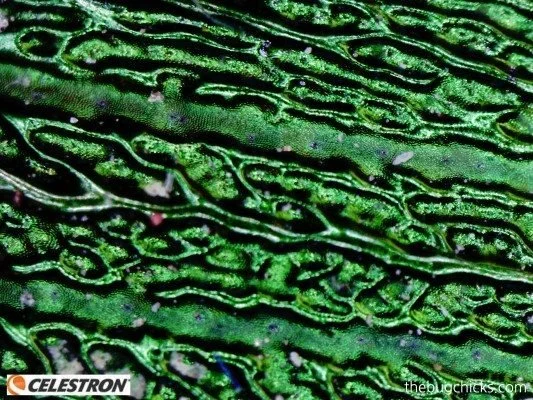A Mite-y Discovery!
Sometimes, when we look at something from a different angle we can make some surprising discoveries. I was playing with my new Cosmos Digital Microscope from Celestron today and wanted to take some shots of exoskeletal microstructure.
For my subject, I chose a Phaneus vindex rainbow dung beetle from our pinned collection. This is a male- you can tell by the horn that comes off the back of the head.These beetles have SO MUCH going on. There's the bronze/orange-chocolate colored pronotum, and the shiny, striated (lined) green elytra.
I've been reading up on beetles and their structural colors lately and wanted to take a closer look. A lot of insects don't rely on pigment for their incredible colors and shimmer. Their exoskeletons have microscopic structures and angles that actually reflect light in the colors that we perceive. This is how they can look different in different lighting and when the angle of light is changed.
EXPERT TIP: Use a tea light candle or a bit of playdoh when looking at pinned specimens under scope. You can move them around to get the angle you want!
In the insect world, looks can be deceiving. The color bronze, up-close, reveals purples, blues and bizarre crystalline shapes that change as they reflect light in different ways.
A beetle elytra that looks smooth can have incredibly intricate ridges and valleys.
At one point I was trying (unsuccessfully- you can't win 'em all) to photograph the different lobes of the lamellae antennae. All dung beetles have these and I wanted a closer look at the hairs that line the edges. I zoomed too far in, and BAM! I made a discovery! Beneath the head, where the antennae arise, there was a group of mites! We've had this beetle for a long time and never noticed!
I tried to isolate one and get it on its back so that we could all see the legs. They are visible, but curled up after dying and desiccating (drying out).
These are likely predatory, phoretic mites. Phoresis is the arthropod version of hitchhiking. Bugs invented it. Tiny mites struggle to get around. So they hitch a ride on a larger, more mobile animal, like an insect, in order to hop off for their next meal or to find a mate. These mites eat insect eggs and nematodes in the soil and dung, so they caravanned on a dung beetle. Unfortunately, they were not to know that it was their last ride... But they helped me make a mite-y discovery and share it with you!
Have you ever seen mites on insects? If so, share your story in the comments!
**I have teamed with Celestron, the makers of fine astronomy equipment and awesome microscopes. when I take pictures with their scopes, you'll know because I will put some branding on them. I'll be working with them to create some really fun teacher training using bugs and scopes! #ScopeLove







